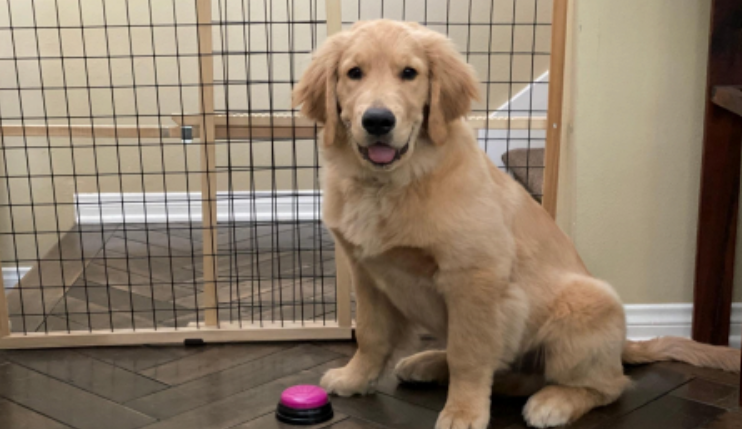You Deserve a Well-Trained Dog
The Top "In Home" Dog Trainer for Naples Fl
NO FORCE, JUST FUN!
People love Naples Top DogsReviews &
Testimonials
List of Services
-
Amanda K
5 STARS!!!!!! Allison is by far the best trainer I’ve ever encountered . She puts these commercial classes to shame , my husband and I have seen our little puppy go from fearful to confident within weeks. You can tell Allison truly cares and has a special way/bond with dogs. I would highly recommend Allison to any family, friend, or stranger. Can’t wait to see the bond we will create with positive reinforcement with our little pup. Thank you Allison for teaching us how to be amazing pet owners.
-
Holly M
Allison has been a blessing in our lives! I have had many Golden’s throughout my life but when I got our recent puppy Derby I was completely overwhelmed as I had never had young kids and a puppy at the same time and it was much harder than I anticipated. Allison worked with my children and myself to train our sweet Derby! Thanks so much Allison! We are forever grateful!!!!
-
Steve & Holly F
We had a great experience with Lynnsee! She stayed at our home with our dog for a week, and every morning we got photos and an update with how our dog was doing. When our dog got sick one day, she let us know promptly and took the right actions to make her feel better. Lynnsee took great care of our dog and even cleaned up the house before we got home, which was not expected but much appreciated. We will definitely use her again to pet-sit!
-
Linda A
This is the BEST dog trainer you could hope for. I have had three trainers very unreliable and finally found the right one. Allison does not just teach sit, stay, etc. She immediately begins training your dog to pay attention to YOU so that you are in control. She teaches with love and respect. Your dog is trained right from the start to look at you, remain by your side until told he is allowed to go with you, etc. My other trainers began right with sit, stay, heal. Allison taught me that my dog needs to give his full attention to me even before walking out the door. My dog has a problem with walking on a leash and she is using all of the correct methods to have the dog remain with me at all times. I have very high regards for her and recommend her to be your best friend's trainer. You will not be disappointed.
-
Judy F
Allison Christian is incredible! She has trained my husband's service dog. Allison has "Magic". She immediately connected with the dog. Her 21 years of experience is obvious. We highly recommend her for service and/or obedience training.
-
Lauren
I wanted to say thank you so much for recommending Naples Top Dogs for training! I can't tell you how much I appreciate it.
I've attached a video of the progress we've made in one night! The dogs are ussually freaking and wanting to get out of the kennel. Allison was able to make them submissive, and pretty much eliminate their jumping on people in one night.
I can't believe it!!
-
Mary Anne Rifice
Molly loves Allison! She has learned so much and when I say "ally is coming for training". Molly waits at front door! Highly recommend!
-
Tenley Smith
Allison from Naples Top Dogs is a very knowledgeable trainer. She began working with my 3.5 YO Scottish Terriers, about 6 weeks after we adopted them. Being litter mates, and a bonded pair, they were very co-dependent, and within 4 weeks, they they can work separately, and they know all of the basic commands: sit, down, stay, touch, wait, "with me" (heel), go to bed, and more!! Their barking was out of control, and now it is almost completely ceased. They are so much better behaved. We are SUPER HAPPY with Allison and Naples Top Dogs! THANK YOU, Allison!!!
-
Savannah S
Naples dog trainer is amazing. I have a dog that was rambunctious and would run out the front door whenever it opened. The first couple of sessions u could tell a difference in my dog. Now she doesn't run out the door, and doesn't jump on people. Thank you!
-
Janet LynnList Item 3
Allison trained my Staffordshire Terrier and I couldnt be happier with her services. I highly recommend her. My dog would not listen to me, come when called and jumped on everyone. Allison fixed all those issues. She was very positive and flexible to my hectic schedule. She spent alot of time working with me so now i know how to train and handle my dog. Very exceptional service.
-
Judy & Mark F.
In addition to obedience. Our dog has already responded to his disability needs. We have been blessed to find such a talented trainer to train our dog to help him. Her 20 years professional experience as a professional dog trainer is apparent. I would highly recommend Ally for obedience and/or service dog training.
-
Christine D.
Within 2 weeks I have already seen an improvement in my anxious dog. SHe has learned more than I thought she would. Can’t wait to see how much more she will progress she makes in the following weeks.
-
Deb M.
Alyson is so good with my dog. She understands how special she is. Halley is training to be a PSA. We set up flexible hours and my dog is learning at a very fast pace. From the first day we were all learning. We love Alyson!
-
Beth P.
They are very good! I would recommend the to all dog owners!
-
Kim J.
Great consultation! Cody and I are super excited to work with Chad and Ali.
-
Savannah S.
Naples Dog Trainers are amazing. I have a dog that was rambunctious and would run out of the front door whenever it opened. The first couple of sessions, I can tell a huge difference in my dog. Now she doesn’t run out of the door, and doesn’t jump on people. Thank you Naples Top Dogs!
-
Natalie M.
Outstanding training for my GSD. Years of expertise definitely shows. Positive and patient.
-
Loreal S.
My dog truly has a bond with Chad. He provided dog walking and training. My dogs behavior after the training has immencely improved. He even showed me a few tricks to keep her momentum going. I would highly recommend this company for anyone who has a furry family member in need of training and TLC.
Naples Top Dogs Blog


SERVICES





